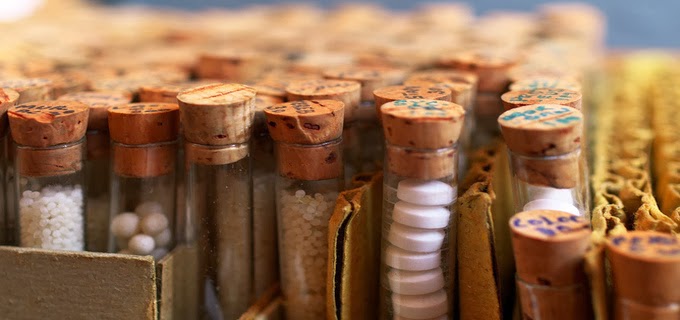Stannum is a metal used for plating of utensils. In
homoeopathic form, it is not used much. In my own experience, I have
found it very effective and important. It is quite useful in the treatment of the terminal stage of tuberculosis of the lungs and very useful in the treatment of phlegmatic type of patients. A daytime headache that gets better at night is very amenable to treatment with
Stannum. However, its best use is in the treatment of chronic
diseases of the lungs and intestinal worm infestation. Its use in the
treatment of worms is not much mentioned in the standard literatures,
though it is definitely referred to in the repertories. Stannum used over
a long period, helps kill or dissolve the intestinal worms and then
expel them. It needs to be used for at least a few months. Stannum
is also an antidote of lead
poisoning. It is also useful in the treatment of
blisters inside the
mouth.
In the areas where utensils are plated with tin, Stannum
should not be forgotten when treating the gastro-intestinal symptoms in that population.
In Western countries, tin plating is not in vogue, so it is not much used.
However, food and beverages are preserved in cans lined internally with tin.
So, wherever the food is consumed out of the cans, Stannum may very well be
needed.
The metal “Tin” melts easily and its homoeopathic form
helps liquefy phlegm for easier expulsion. In case the lungs have become congested,
inflamed and become firm. Stannum will be helpful to treat this condition. Pains
related to Stannum begin at sunrise, and then gradually keep on getting worse.
The symptoms start subsiding as the day declines and disappear completely at
sunset.
Headache becoming worse in the sun responds very well to Natrum
Mur, Sanguinaria as well as Stannum. Stannum has a peculiarity that exposure to the cold
affects the nerves, in particular of the face, causing facial neuralgia.
Another symptom of Stannum is that the chest feels weak.
The patient feels easily exhausted even on talking as if the chest has lost its
strength. The chest becomes
weak and the lungs feel lifeless, as a result of which the patient
cannot even talk. Some of these patients are chronic sufferers of these
conditions. They must be treated with Stannum in high potency, to be repeated
every two weeks or so for a few months. The patient will be found getting
better surprisingly fast. Stannum is
very helpful in the treatment of symptoms of tuberculosis of the lungs.
Another symptom of Stannum is nausea, which can occur from the smell of food being cooked,
as in Colchicum. The taste of the mouth becomes bitter. The stomach feels
empty, accompanied by cramps (hunger pangs). The feeling of weakness is
profound, especially in the chest. The patient finds it difficult to talk. He
has dry cough, which
gets worse on talking, laughing and singing. The patient always feels tired and
feels progressive weakness. He is very sensitive to the change of weather.
There is a tendency to palpitate and the heart starts beating fast even on
slight exertion. The arms and legs quiver, feel heavy and have cramps. The
thumbs get drawn towards the palms which is a prominent feature of Plumbum. In Stannum, typically, the patient feels
exhausted even while descending the stairs, whereas normally in most illnesses,
people feel difficulty in climbing the stairs. Muscles at the forearms and the hands feel tight and
contracted while writing and typing. Spasmodic twitching of the fingers is its salient feature.
In women, the periods are more frequent and more copious
(menorrhagia).
There is irritation inside the uterus and a feeling of downward
sag. The discharge is pale yellow or whitish and watery, rendering
the patient weaker. In Stannum, light touch aggravates the suffering, while
the deep pressure or lying down on a hard surface offers relief. The symptoms aggravate
gradually and subside equally slowly. The headache, however, subsides fast.





